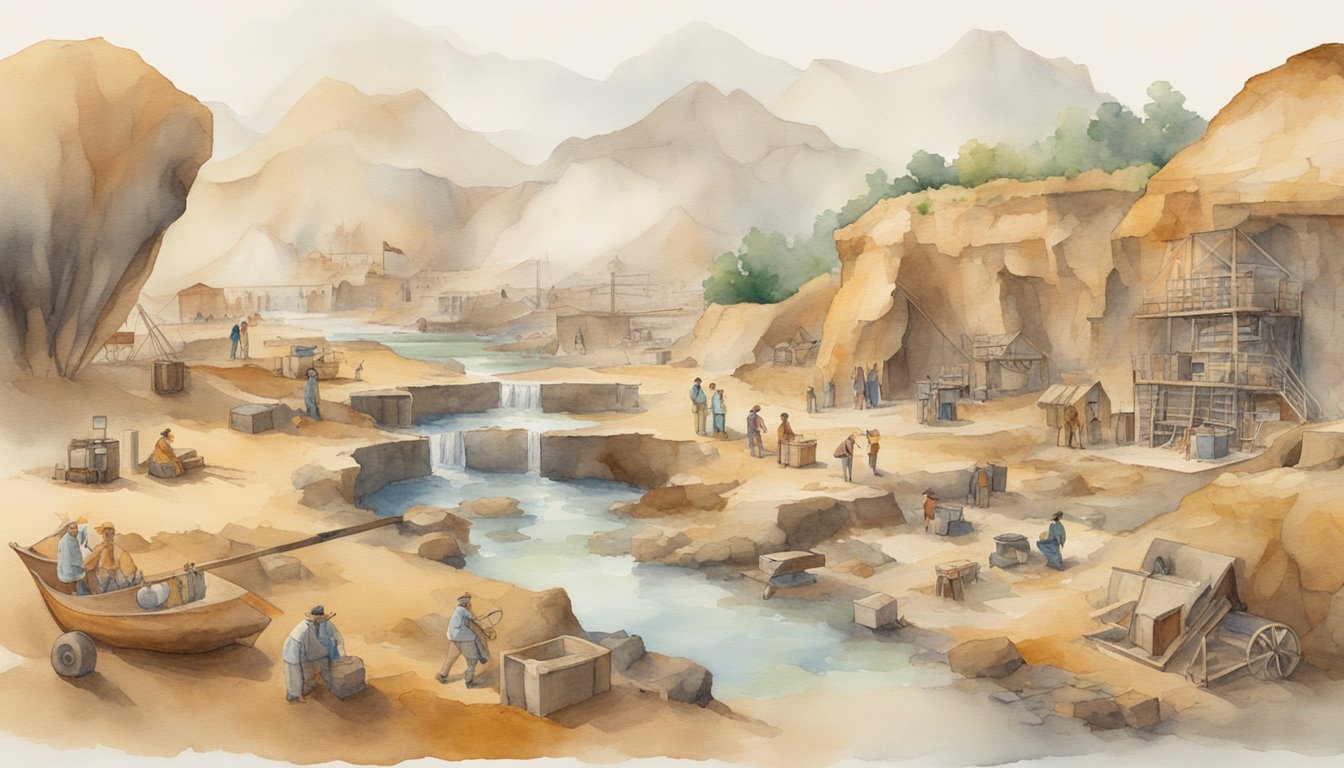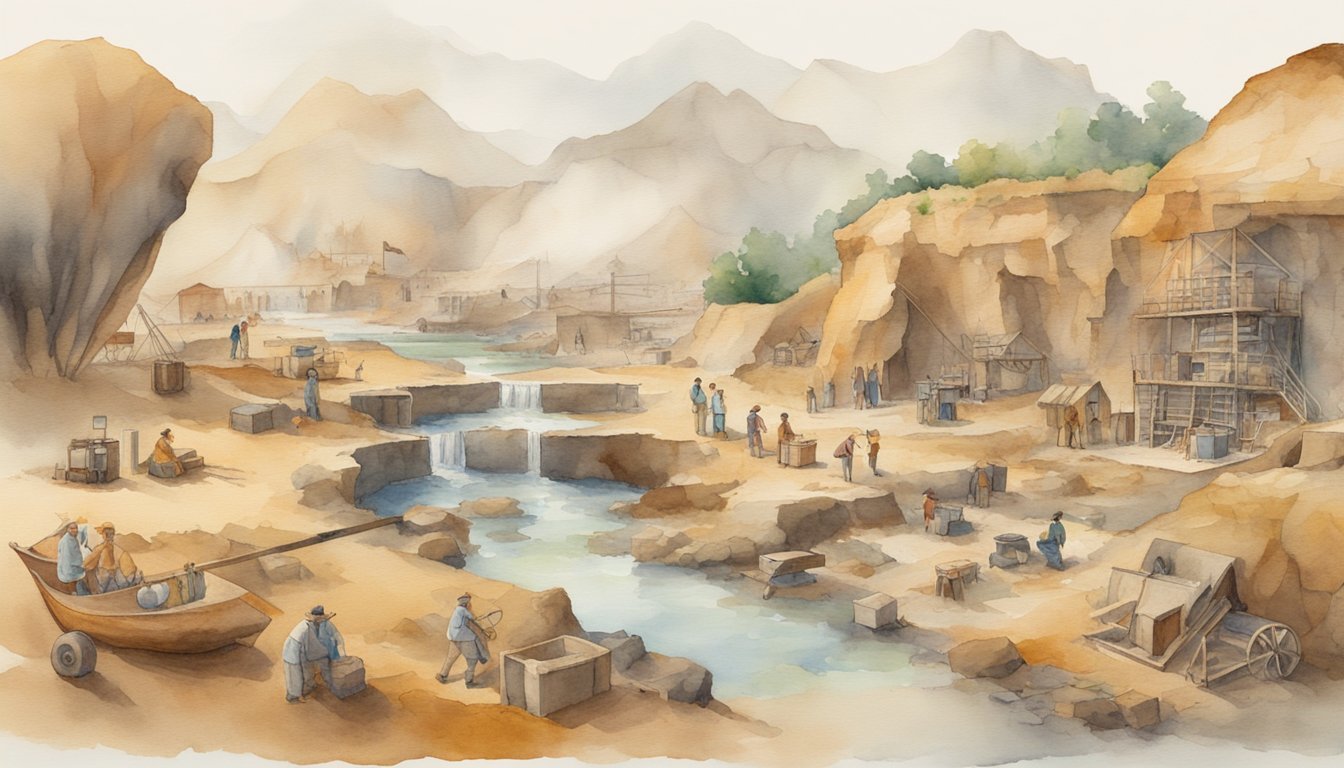Foundations of Human Evolution
Tracing the intricate path of human evolution presents an enthralling puzzle pieced together through a dynamic interplay of genetics and fossil records. From the depths of African origins to the diversification of species such as Neanderthals and Homo sapiens, this is a history etched in both our DNA and the earth itself.
Genetics and Ancestry
The blueprint of life, DNA holds the keys to the story of human evolution. Through the study of genetic material, scientists have identified that humans share a common ancestor with apes, having diverged from a mutual lineage approximately 6 to 8 million years ago in Africa. Mitochondrial DNA, often called the ‘powerhouse’ of the cell, plays a crucial role in tracing maternal ancestry and has allowed researchers to outline a genetic timeline that maps back to ‘Mitochondrial Eve,’ an individual woman from whom all humans today descend matrilineally. With advances in molecular biology, the human genome has been mapped, revealing connections and divergences within the human family tree, and shedding light on relationships with other human species, like the Neanderthals and Denisovans, our long-lost relatives who have contributed small but significant amounts of their genetic material to some modern human populations, particularly in Eurasia. For a deeper understanding of the genetic links that have been uncovered, delve into the influence of evolutionary history on human health and disease.
Fossil Evidence and Paleoanthropology
Fossilized bones and footprints lay bare the physical journey of our hominin ancestors, providing insight into not just their appearances but also their lifestyles. Lucy, the famed Australopithecus afarensis discovered in Ethiopia, reveals evidence of bipedalism—a hallmark in human evolution. Older species like Orrorin tugenensis and Ardipithecus add layers to this multifaceted narrative, reinforcing Africa as the cradle of humankind. The Homo lineage encapsulates species from Homo habilis, known for its stone tool usage, to Homo erectus, an adept wanderer who left Africa to populate parts of Eurasia. Notable fossils like those from Jebel Irhoud, Herto, and the more recent discovery of Homo floresiensis have filled in gaps in the timeline, demonstrating an intricate branching rather than a straight line from primitive to modern forms. Each discovery acts like a puzzle piece to the human history, further elaborated in works such as “The institutional foundations of human evolution,” which explores the trajectory from primitive primates to modern humans.
By examining fossils and digs across the globe, paleoanthropologists stitch a picture of diverse hominin species, tracing the evolution of our bodies and brains, the advent of tool-making, hunting strategies, and even the possible origins of language. This fossil evidence not only enriches the story of our past but fuels the ongoing intrigue surrounding how Homo sapiens ultimately became the sole surviving branch of a once-varied human tree.
Cultural and Technological Advancements

Human evolution has been marked by remarkable milestones in culture and technology that shaped who humans are today. These advancements are inextricably linked to the development of stone tools, mastery of fire, the emergence of language, and the complex social structures that have defined human societies throughout history.
Stone Tools and Fire Control
The discovery and utilization of stone tools were pivotal moments in human evolution. The Early Stone Age, also known as the Paleolithic era, saw early humans in East Africa manufacturing simple yet effective tools like choppers and flakes for cutting and skinning. The Middle Stone Age introduced refined techniques, leading to smaller, more precise tools. Artifacts like projectile points and bone tools emerged, indicating progress in hunting and butchering practices. Additionally, there is evidence of Homo erectus in Swartkrans, South Africa, demonstrating fire use around one million years ago, which played a critical role in cooking food and providing warmth.
- Timeline: Early Stone Age to Middle Stone Age
- Key Artifacts: Choppers, Flakes, Projectile Points
- Significant Sites: East Africa, Swartkrans
Language and Social Structures
Language development signified a great leap forward in human evolution. Complex speech and language likely evolved with Homo neanderthalensis and early Homo sapiens, allowing for enhanced communication and the transmission of knowledge. This coincided with the expression of abstract thoughts and the use of symbols, witnessed through cave paintings and carvings. Social life became more complex, with evidence of burial practices and a greater emphasis on community and education, suggesting the formation of intricate social structures.
- Characteristics: Language, Symbols, Burial
- Indications of Complex Social Life: cave paintings, education
Migration and Global Spread
The widening canvas of human existence is marked by the spread of human ancestors across the globe. The oldest known footprints outside Africa were discovered in Happisburgh, England, dating to about 800,000 years ago. Further migrations saw Homo sapiens reaching Australia by 65,000 years ago. It’s during these significant migrations that humans encountered other hominin species, like the Homo floresiensis in Indonesia, and adapted to various climates and challenges. Such movements were facilitated by the development of shelters, hunting tools, and methods to harness resources, indicating advanced behavior and adaptability.
- Migration Evidence: Footprints in Happisburgh
- Global Spread: Reach of Australia by Humans
- Interactions: Homo floresiensis
AI-generated text does not have sources to cite
Interpreting the Human Story

Tracing the human story through evolution gives insight into how modern humans have come to be. With the help of educational material and the study of climate and environment, one can understand the significant factors that contributed to human development.
Exhibits and Educational Material
When stepping into a museum exhibit or engaging with educational material, one is often introduced to the human evolution timeline through a rich tapestry of images, reconstructions, and descriptions of life as it once was. Visitors might see vivid representations of ancient humans displaying the characteristics that define different stages in our ancestral lineage. For instance, one might encounter reconstructions based on ancient DNA, which help bridge the gap between prehistoric life and the modern humans we are familiar with today. Exhibits serve not only as an introduction to human evolution, but they also use symbols and imagery to make the complex story accessible and engaging.
The Role of Climate and Environment
Climate and environment have played underpinning roles in shaping the characteristics of human evolution. Educational resources frequently highlight how varying climates influenced our ancestors’ survival strategies and anatomical adaptations. It’s intriguing to consider, for example, that significant evolutionary changes often coincide with periods of dramatic climate change. Tools and dating methods utilized by researchers uncover evidence about how early humans adapted to these environments. This educational approach provides insight into how the interplay between human characteristics and the environment is a key element of the timeline, impacting the development of the products and technologies that supported early human life.
By diving into these facets of the human story, one can appreciate the intricate patterns of human evolution and the remarkable journey of our ancestors.

